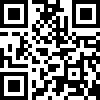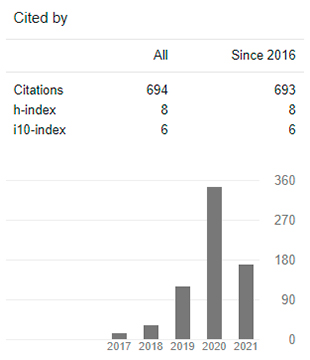Teaching Methods Supported in the Canaima Micro-Order: An Alternative in the Teaching of National History
(Project in Development)
DOI:
https://doi.org/10.29394/Scientific.issn.2542-2987.2019.4.11.1.27-45Keywords:
teaching methods, microcomputers, national history, basic education, educational qualityAbstract
The teaching of national history from the early years of primary education is essential to forge the inherent values of national identity, so necessary for the formation of critical, reflective citizens with deep roots in the historical and cultural heritage of their country. Parallel to this, information and communication technologies (ICT), currently play a fundamental role in the pedagogical world, as they are capable of providing a variety of activities, allowing enrich the teaching and learning processes; Canaima microcomputer being one of the most widespread technological resources of this kind in the country. The purpose of the ongoing research, of a feasible project type up to the execution phase, is to provide teaching methods to strengthen the approach to learning in history through the aforementioned resource. Likewise, it is intended to promote the enrichment of the teaching praxis taking advantage of the versatility offered by this tool, to impregnate the study of national history with significance. This compendium of information is framed within a study in development, whose population will be the teachers and students of second and third grade of the Educational Unit "Alto Barinas Sur"; aspiring to evaluate the level of depth with which the contents are developed, the degree of understanding and interest of the students for them, as well as the real impact that this microcomputer has in the dynamization of the contents and in the development of the methods. Under this approach, it is expected to promote in the educational community a revision of the methods that are being used, the reconsideration inherent in the use of these and the transcendence that the contents have for the students.
Downloads
References
Arias, F. (2012). El Proyecto de Investigación: Introducción a la metodología científica. 6ª Edición. ISBN: 980-07-8529-9. Caracas, Venezuela: Editorial Episteme. Recuperado de: https://www.researchgate.net
Behar, D. (2008). Metodología de la Investigación. Introducción a la Metodología de la Investigación. ISBN: 978-959-212-783-7. Colombia: Editorial Shalom.
Díaz, F. (2015a,b). Estrategias Docentes para un Aprendizaje Significativo, Una interpretación constructivista. ISBN: 970-10-3526-7. México: McGraw-Hill/Interamericana Editores. Recuperado de: https://jeffreydiaz.files.wordpress.com/2008/08/estrategias-docentes-para-un-aprendizaje-significativo.pdf
Díaz, L. (2010). La Observación. México: Universidad Nacional Autónoma de México, Facultad de Psicología. Recuperado de: http://www.psicologia.unam.mx
Dorante, A. (2015). Diseño de una Guía sobre Estrategias Didácticas para Fortalecer la Enseñanza y Aprendizaje de la Física. Naguanagua, Venezuela: Universidad de Carabobo, Facultad de Ciencias de la Educación. Recuperado de: http://riuc.bc.uc.edu.ve/bitstream/123456789/3130/1/adorante.pdf
González, M. (2014). La Canaima Educativa una Herramienta Tecnológica de Enseñanza en la Educación Primaria Bolivariana. Venezuela: Universidad Fermín Toro. Recuperado de: http://www.uft.edu.ve/campusvirtual/edicion4/Articulo3.pdf
Ramírez, M., & La Cruz, O. (2017). El clima organizacional en una empresa de alimentos y bebidas en el área de lácteos en la ciudad de Lima en el año 2016. Lima, Perú: Universidad Privada del Norte, Facultad de Negocios. Recuperado de: http://repositorio.upn.edu.pe
Mora, A. (2015). Actitud del Docente ante el uso de las Tecnologías de Información y Comunicación en el Proyecto Canaima Educativo. Naguanagua, Venezuela: Universidad de Carabobo, Facultad de Ciencias de la Educación. Recuperado de: http://mriuc.bc.uc.edu.ve/bitstream/handle/123456789/2081/Amora.pdf?sequence=1
Pagés, J., & Santisteban, A. (2010). La Enseñanza y el Aprendizaje del Tiempo Histórico en la Educación Primaria. Barcelona, España: Universidad Autónoma de Barcelona. Recuperado de: http://www.scielo.br/pdf/ccedes/v30n82/02.pdf
Pumar, L. (2013a,b). El Papel de la Historia de Venezuela para la Construcción De Identidad y su Metodología de Abordaje para un Aprendizaje Significativo. Naguanagua, Venezuela: Universidad de Carabobo, Facultad de Ciencias de la Educación. Recuperado de: http://mriuc.bc.uc.edu.ve/bitstream/handle/123456789/1543/4679.pdf?sequence=3
Quintero, E. (2016). Aproximación Teórica al uso del Proyecto Educativo Canaima como herramienta para fortalecer la Calidad Educativa. Revista Scientific, 1(2), 89-109. Recuperado de: https://doi.org/10.29394/scientific.issn.2542-2987.2016.1.2.6.89-109
Rusque, A. (2007). De la Diversidad a la Unidad en la Investigación Cualitativa. 3ra. Reimpresión, ISBN: 980212284X. Caracas, Venezuela: Vadell Hnos. Editores, C.A. Recuperado de: https://es.scribd.com/document/239842899/De-La-Diversidad-a-La-Unidad-en-La-Investigacion-Cualitativa-1
SEB (2007). Currículo del Subsistema de Educación Primaria Bolivariana. Caracas, Venezuela: Sistema Educativo Bolivariano, Ministerio del Poder Popular para la Educación. Recuperado de: http://www.cerpe.org.ve
UPEL (2016a,b). Manual de Trabajos de Grado de Especialización y Maestría y Tesis Doctorales. 5ta Edición. Venezuela: Fondo Editorial de la Universidad Pedagógica Experimental Libertador. Recuperado de: https://es.slideshare.net/mirnalitaguirrez/manual-upel-2016-1pdf
Villegas, Z., Marrero, L., & Vásquez, W. (2014). Formación docente para la integración del Proyecto Canaima Educación en el Proceso de Enseñanza de la Matemática. Caso: Escuela Básica “Nueva Guacara. Revista de Tecnología de Información y Comunicación en Educación, 8(3), 41-53. Recuperado de: http://servicio.bc.uc.edu.ve/educacion/eduweb/v8n2/art04.pdf
Published
How to Cite
Issue
Section
License
Copyright (c) 2019 INDTEC, C.A.

This work is licensed under a Creative Commons Attribution-NonCommercial-ShareAlike 4.0 International License.
The content of the journals of this site, are under a Creative Commons Attribution-Noncommercial-Share Alike 4.0 International License.













